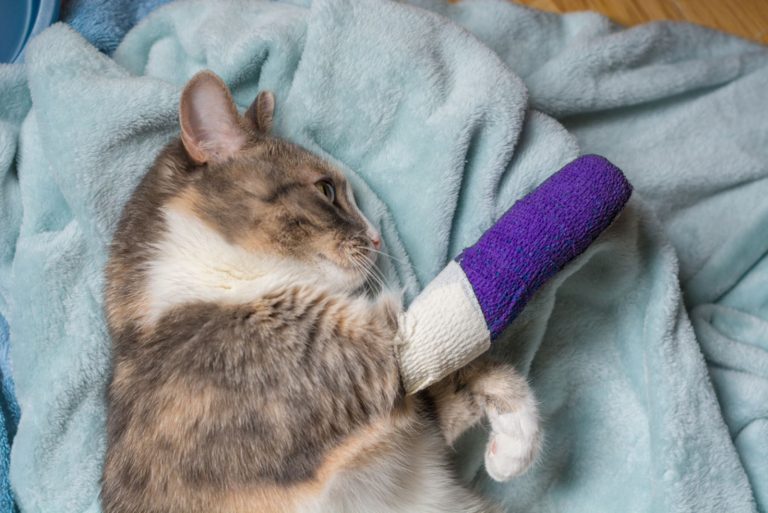7 Signs Of Frostbite In Cats And How To Keep Your Kitty Safe This Winter
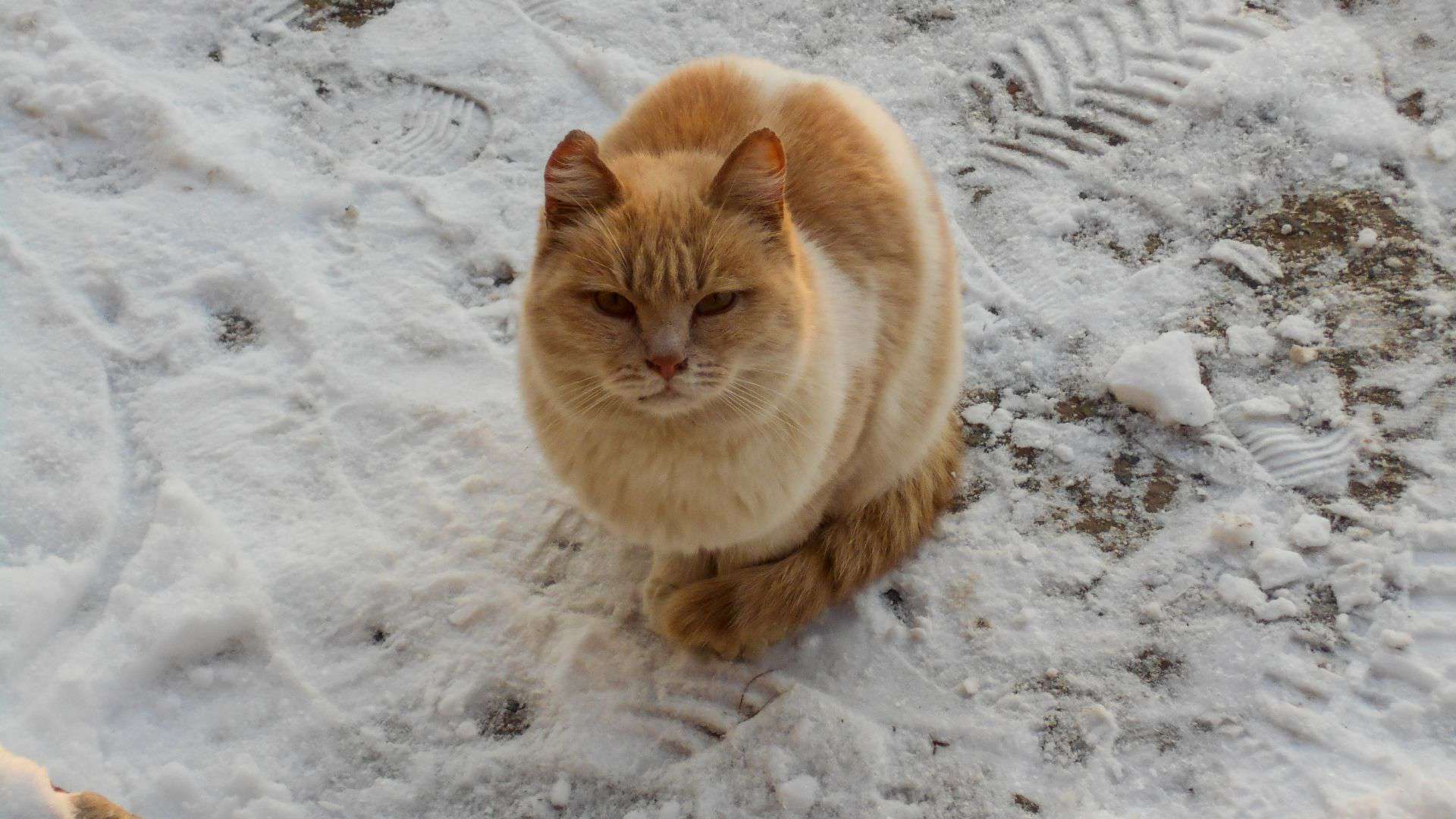
Your feline friend can get frostbite just like you, were you aware of that?
Cats typically develop frostbite on their ears, and it’s a relatively common skin injury in outdoor cats or even pet cats residing in areas where temperatures drop below 32 degrees Fahrenheit.
Don’t worry! By providing proper care, you can effectively prevent your cat from getting frostbite. Before we dive into prevention, let’s briefly explain what frostbite is, ensuring you can recognize it when needed.
What Is Cat Frostbite?

So frostbite happens when your skin is exposed to freezing temperatures for too long. Basically, when it’s freezing, your blood vessels in the skin tighten up, trying to keep the core warm.
That means all the essential components from the blood, like warmth and nutrients, are redirected to keep your insides warm. However, this leaves the skin exposed to freezing temperatures, causing ice crystals to form and damage skin cells.
It’s challenging because, while it saves your cat’s life, it can mess up their skin big time! Especially on their tails, noses, paws, and ears.
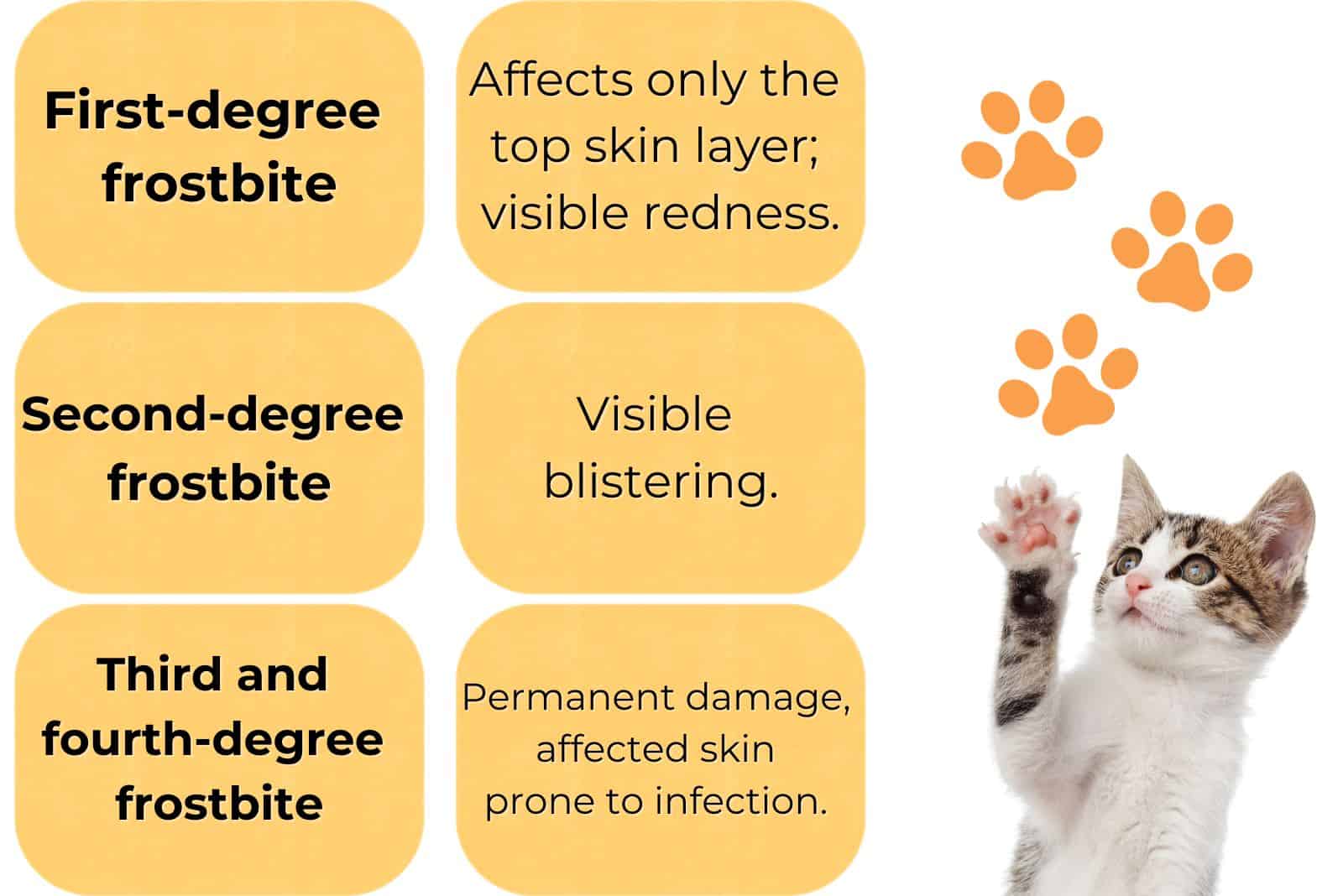
Now, frostbite has different levels, i.e. degrees. First-degree is the mildest, affecting only the top layer of skin and usually not causing lasting damage.
On the other hand, third and fourth degrees occur when your cat’s entire leg, foot, nose, or ear becomes frozen, resulting in severe permanent damage and disfigurement.
7 Signs To Pay Attention To
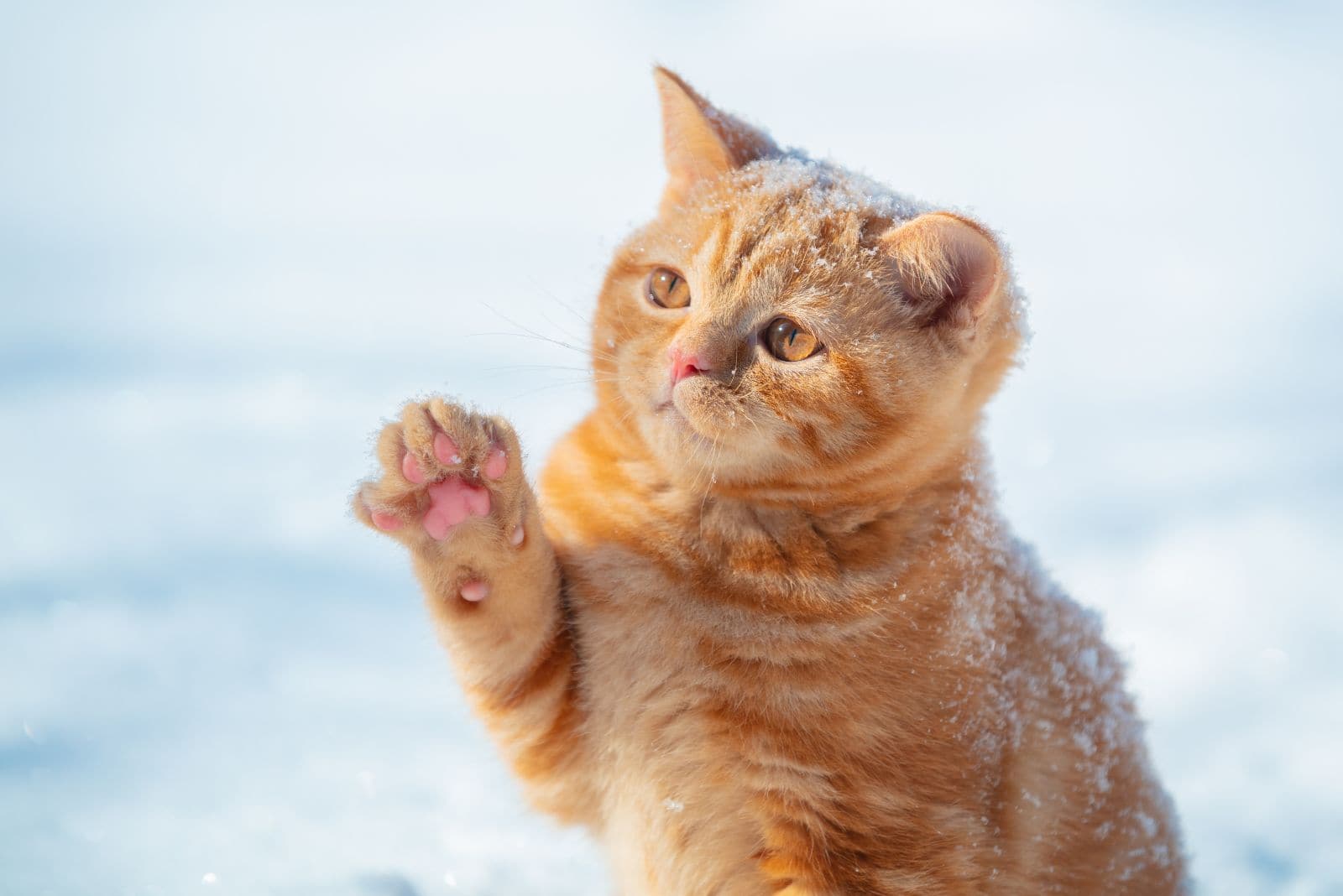
You can easily identify cat frostbite by looking out for these signs:
1. Unusual skin color – it may appear gray, white, deep purple, blue, black, or red.
2. The cat’s skin might turn red, swell up, and be painful.
3. You might even notice blisters filled with blood.
4. The cat’s skin might feel cold and rock-hard.
5. It can become fragile and break easily upon touch.
6. You might observe ulcers.
7. Dead skin may slough off.
These signs can appear over days to weeks, especially on those ear tips. If the frostbite is third or fourth-degree, as I mentioned, it kills the skin. Consequently, the skin turns black and dead before eventually falling off.
Any outdoor cat in temperatures below freezing is at risk. Kittens, senior cats, and cats with conditions like diabetes, heart or kidney issues, or hyperthyroidism are even more likely to get frostbite due to reduced blood flow to their extremities.
What To Do If It Occurs
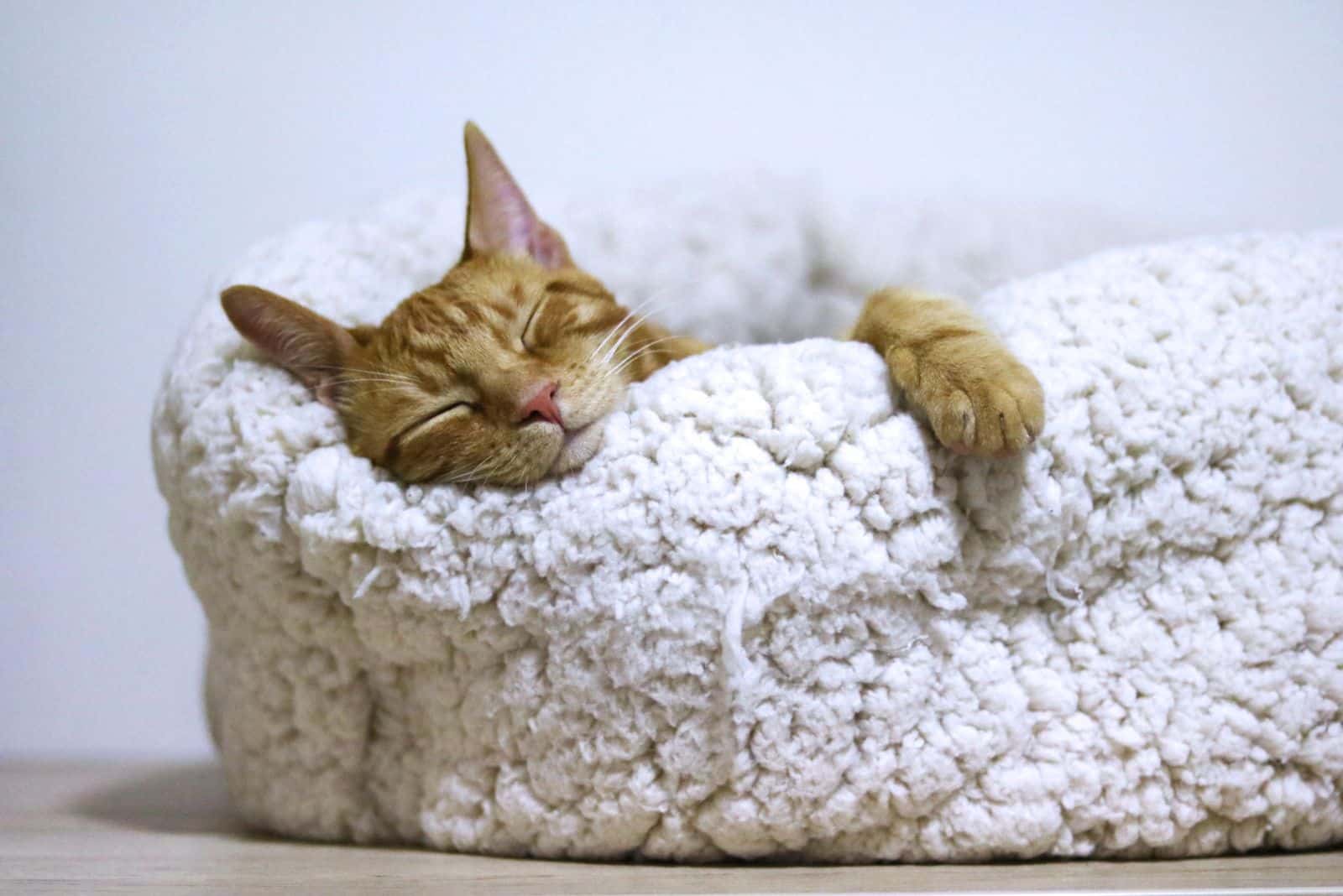
If your cat is dealing with frostbite, here’s what you can do to lend a paw.
First, bring your cat indoors where it’s warm and cozy. If your furry friend is shivering or feeling cold, use some towels warmed up in the dryer. You need to gently warm up your cat without rubbing or applying lotions to the affected skin.
To thaw out the frostbitten skin, use warm water (not scorching hot) in a bowl or warm compresses. Carefully pat the frosty areas dry with a towel, avoiding rubbing or using hairdryers.
However, if you’re stuck outside without anywhere warm to go, refrain from warming up the frostbitten skin until you can maintain its warmth consistently. Thawing and refreezing can aggravate the situation.
Oh, and steer clear of human pain meds for your cat – they’re toxic to our feline friends. The same goes for prescription painkillers unless your vet gives the green light.
While you’re tending to your frosty feline, make that call to your vet ASAP! They will likely provide some on-the-phone guidance, but having your cat examined by the vet is the best course of action.
Most Importantly, How To Prevent It
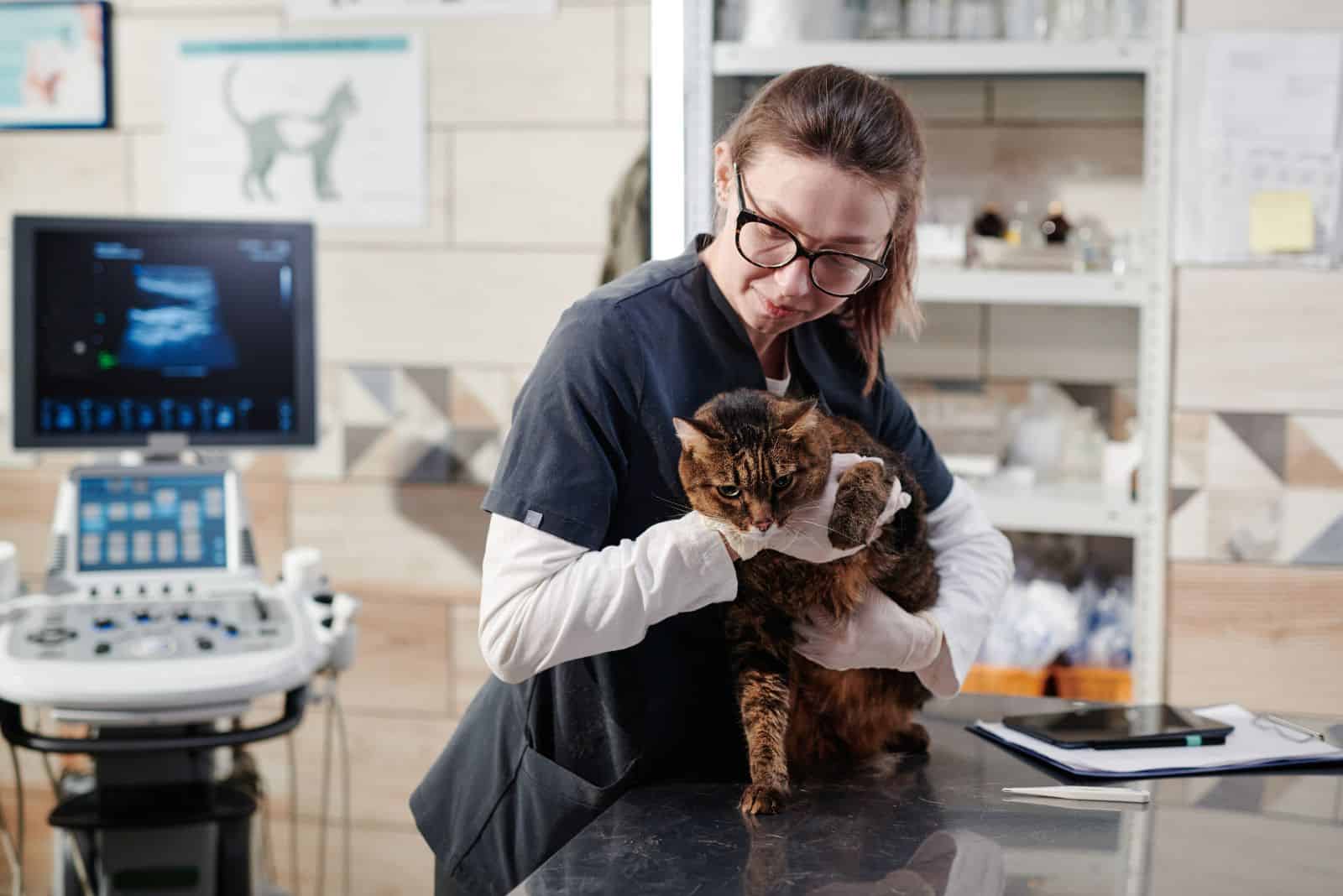
There are numerous veterinary treatments for frostbite, which is why it’s never a bad idea to take your furry friend to an expert.
A veterinarian will assess your cat, offer treatment, and may prescribe antibiotics or pain relievers if necessary. Cat frostbite is painful, but mostly it’s a waiting game for the skin to recover.
Keep an eye on your cat’s frostbite signs, as they can take time to fully manifest. In severe cases, if the skin is significantly damaged, the vet might need to amputate.
Most importantly, to prevent frostbite, keep your cat indoors when temperatures are freezing. If they’re a wanderer, set up a warm catio or a cozy shelter in your yard for those chilly days outdoors.



